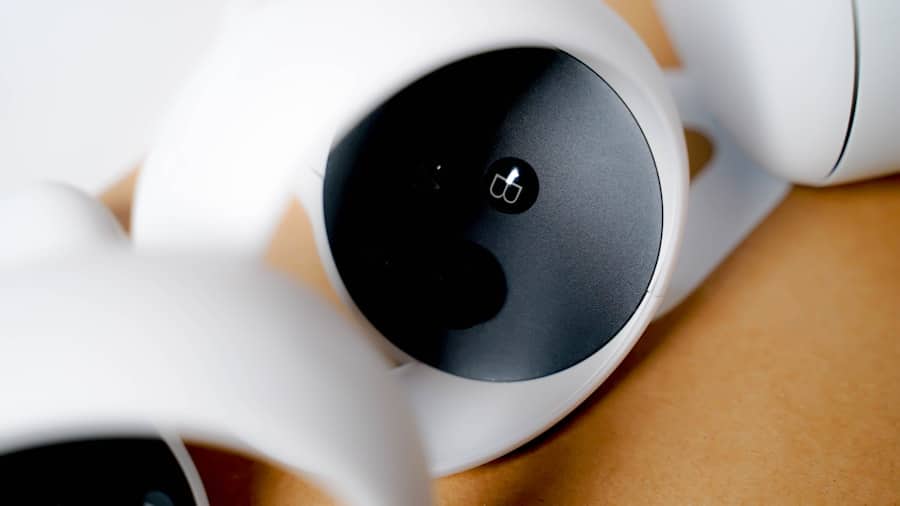The landscape of virtual reality (VR) technology has evolved dramatically over the past few years, leading to the emergence of next-generation VR headsets that are not only more immersive but also more accessible than ever before. These advanced devices are equipped with cutting-edge features such as high-resolution displays, improved motion tracking, and enhanced audio systems, which collectively create a more engaging and realistic experience for users. As VR technology continues to advance, its applications have expanded beyond gaming and entertainment, finding a significant foothold in various fields, including healthcare, education, and therapy.
In particular, the integration of next-gen VR headsets into cognitive therapy has garnered considerable attention from mental health professionals. The immersive nature of VR allows therapists to create controlled environments where patients can confront their fears, practice coping strategies, and engage in therapeutic exercises in a safe space. This innovative approach not only enhances the therapeutic experience but also provides a unique opportunity for patients to engage with their treatment in ways that traditional methods may not allow.
As we delve deeper into the benefits and features of these headsets, it becomes clear that they hold immense potential for transforming cognitive therapy practices.
Key Takeaways
- Next-gen VR headsets offer improved technology and features for a more immersive and effective cognitive therapy experience.
- VR therapy has shown benefits for cognitive therapy, including improved attention, memory, and executive function, as well as reduced anxiety and depression symptoms.
- Important features to look for in next-gen VR headsets for cognitive therapy include high resolution displays, accurate motion tracking, comfortable design, and customizable content.
- Case studies have demonstrated successful outcomes using VR therapy for conditions such as PTSD, phobias, and autism spectrum disorders.
- Potential drawbacks and limitations of next-gen VR headsets for cognitive therapy include cost, accessibility, and the need for further research on long-term effectiveness and best practices.
The Benefits of VR for Cognitive Therapy
The application of VR in cognitive therapy offers numerous advantages that can significantly enhance the therapeutic process. One of the most notable benefits is the ability to create highly controlled environments tailored to individual patient needs. For instance, a therapist can simulate a variety of scenarios that a patient may find anxiety-provoking, such as public speaking or social interactions.
This exposure therapy allows patients to confront their fears gradually and safely, enabling them to develop coping mechanisms and resilience in real-world situations. Moreover, VR can facilitate a more engaging and interactive therapeutic experience. Traditional cognitive therapy often relies on verbal communication and worksheets, which may not resonate with all patients.
In contrast, VR provides an immersive experience that can capture a patient’s attention and encourage active participation. This heightened engagement can lead to improved retention of therapeutic concepts and techniques, ultimately resulting in better treatment outcomes. Additionally, the novelty of VR technology can motivate patients to participate more actively in their therapy sessions, fostering a sense of ownership over their healing journey.
Features to Look for in Next-Gen VR Headsets for Cognitive Therapy

When selecting next-gen VR headsets for cognitive therapy applications, several key features should be considered to ensure optimal effectiveness and user experience. First and foremost, high-resolution displays are essential for creating a lifelike environment that minimizes discomfort and enhances immersion. A headset with a resolution of at least 1080p per eye is recommended, as this level of clarity allows patients to engage more fully with the virtual world.
Another critical feature is precise motion tracking technology. Advanced headsets utilize inside-out tracking systems that monitor the user’s movements without the need for external sensors. This capability is crucial for maintaining immersion and ensuring that patients can interact naturally with their virtual surroundings.
Additionally, haptic feedback systems can enhance the sense of presence by providing tactile sensations that correspond with virtual interactions, further enriching the therapeutic experience. Comfort is also paramount when selecting a VR headset for cognitive therapy. Since therapy sessions may last for extended periods, headsets should be lightweight and ergonomically designed to minimize discomfort during use.
Adjustable straps and customizable fit options can help accommodate various head shapes and sizes, ensuring that patients can focus on their therapy rather than adjusting their equipment. Finally, compatibility with various software applications designed specifically for cognitive therapy is essential, as this will allow therapists to tailor experiences to meet individual patient needs effectively.
Case Studies: Success Stories of VR Therapy
Numerous case studies have emerged showcasing the successful application of VR technology in cognitive therapy settings. One notable example involves the treatment of individuals with social anxiety disorder (SAD). In a controlled study, participants were exposed to virtual social situations—such as attending a party or giving a presentation—while wearing VR headsets.
Over several sessions, patients reported significant reductions in anxiety levels and improved confidence in real-life social interactions. The immersive nature of the VR environment allowed them to practice social skills in a safe space, leading to meaningful progress in their therapeutic journey.
A group of veterans participated in a VR therapy program where they were gradually exposed to virtual recreations of traumatic events they had experienced during combat. The therapists guided them through these experiences while teaching coping strategies and relaxation techniques. The results were promising; many veterans reported decreased symptoms of PTSD and an increased ability to manage their emotional responses when confronted with reminders of their trauma.
This case illustrates how VR can facilitate exposure therapy in a controlled manner, allowing patients to process their experiences at their own pace.
Potential Drawbacks and Limitations of Next-Gen VR Headsets for Cognitive Therapy
Despite the numerous benefits associated with next-gen VR headsets in cognitive therapy, there are also potential drawbacks and limitations that practitioners must consider. One significant concern is the risk of motion sickness or discomfort experienced by some users during VR sessions. Symptoms such as dizziness, nausea, or headaches can detract from the therapeutic experience and may discourage patients from fully engaging with the technology.
It is essential for therapists to monitor patients closely and provide appropriate breaks or alternative methods if discomfort arises. Another limitation is the accessibility of VR technology. While prices have decreased over time, high-quality VR headsets can still be prohibitively expensive for some practices or patients.
Additionally, not all patients may have access to the necessary hardware or software required for effective VR therapy sessions. This disparity could create inequities in treatment options available to different populations, particularly those from lower socioeconomic backgrounds.
While initial studies show promise, more extensive clinical trials are necessary to establish standardized protocols and best practices for integrating VR into cognitive therapy effectively. Without robust evidence supporting its efficacy across diverse patient populations, some practitioners may remain hesitant to adopt this innovative approach.
The Future of VR in Cognitive Therapy

The future of VR technology in cognitive therapy appears bright as advancements continue to emerge at a rapid pace. As hardware becomes more sophisticated and affordable, it is likely that we will see increased adoption among mental health professionals seeking innovative ways to enhance their therapeutic practices. The integration of artificial intelligence (AI) into VR applications could further revolutionize cognitive therapy by enabling personalized experiences tailored to individual patient needs.
For instance, AI algorithms could analyze patient responses during VR sessions and adapt scenarios in real-time based on their emotional state or progress. This level of customization could lead to more effective treatment outcomes by ensuring that patients are consistently challenged while also feeling supported throughout their therapeutic journey. Additionally, as telehealth becomes more prevalent, remote access to VR therapy could provide opportunities for patients who may not have access to traditional in-person services.
Moreover, interdisciplinary collaboration between technologists and mental health professionals will be crucial in shaping the future landscape of VR therapy. By working together, these experts can develop innovative applications that address specific mental health challenges while ensuring ethical considerations are prioritized. As research continues to validate the efficacy of VR in cognitive therapy settings, it is likely that we will see an expansion of training programs designed to equip therapists with the skills necessary to integrate this technology into their practices effectively.
Tips for Integrating Next-Gen VR Headsets into Cognitive Therapy Practices
Successfully integrating next-gen VR headsets into cognitive therapy practices requires careful planning and consideration. First and foremost, therapists should invest time in familiarizing themselves with the technology and its capabilities before introducing it to patients. Understanding how to navigate the software and troubleshoot common issues will help ensure a smooth experience for both therapists and clients.
Additionally, it is essential to start slowly when introducing VR therapy to patients. Gradual exposure allows individuals to acclimate to the technology without feeling overwhelmed or anxious about using it. Therapists should begin with short sessions focused on simple tasks before progressing to more complex scenarios as patients become more comfortable with the virtual environment.
Creating a supportive atmosphere during VR sessions is also vital for fostering positive therapeutic outcomes. Therapists should encourage open communication about any discomfort or concerns that arise during use and be prepared to adjust the experience accordingly. Providing reassurance and guidance throughout the process can help patients feel more secure as they navigate their virtual experiences.
Finally, ongoing evaluation of patient progress is crucial when integrating VR into cognitive therapy practices. Regularly assessing how well patients respond to virtual scenarios can inform future sessions and help therapists tailor experiences based on individual needs effectively. By maintaining an adaptive approach, therapists can maximize the benefits of next-gen VR headsets while ensuring that each patient’s unique therapeutic journey is honored.
The Promise of Next-Gen VR Headsets for Cognitive Therapy
The advent of next-gen VR headsets presents an exciting opportunity for revolutionizing cognitive therapy practices. With their ability to create immersive environments tailored to individual patient needs, these devices offer unique advantages that traditional methods may struggle to provide. As we continue to explore the potential applications of this technology within mental health care, it becomes increasingly clear that VR has the power to enhance therapeutic outcomes significantly.
While challenges remain regarding accessibility and potential side effects, ongoing research and collaboration between mental health professionals and technologists will pave the way for innovative solutions that address these concerns. As we look toward the future, it is evident that next-gen VR headsets hold immense promise for transforming cognitive therapy into a more engaging, effective, and personalized experience for patients seeking healing and growth.
In the realm of technological advancements, the exploration of next-gen VR headsets for cognitive therapy is a fascinating development that holds promise for enhancing mental health treatments. As we delve into the potential of these innovative devices, it’s also essential to consider the broader landscape of technology that supports such advancements. For instance, the choice of hardware can significantly impact the performance and effectiveness of VR applications. An article that complements this discussion is Best Laptops for Coding & Programming, which provides insights into selecting powerful computing devices that can handle the demanding requirements of VR software development. Understanding the specifications and capabilities of these laptops can be crucial for developers working on cutting-edge VR solutions for cognitive therapy.
FAQs
What is cognitive therapy?
Cognitive therapy is a type of psychological treatment that helps individuals identify and change negative thought patterns and behaviors. It is commonly used to treat conditions such as anxiety, depression, and PTSD.
What are next-gen VR headsets?
Next-gen VR headsets refer to the latest generation of virtual reality devices that offer advanced features such as improved graphics, higher resolution displays, enhanced tracking, and more immersive experiences.
How can VR headsets be used for cognitive therapy?
VR headsets can be used in cognitive therapy to create immersive environments that help individuals confront and manage their fears and anxieties. This exposure therapy can be particularly effective for treating phobias and PTSD.
What are the potential benefits of using next-gen VR headsets for cognitive therapy?
Next-gen VR headsets offer higher fidelity experiences, which can make the virtual environments more realistic and engaging for therapy purposes. This can lead to more effective treatment outcomes for individuals undergoing cognitive therapy.
Are there any limitations or risks associated with using VR headsets for cognitive therapy?
While VR therapy has shown promise, there are still limitations and potential risks to consider, such as motion sickness, disorientation, and the need for trained professionals to guide the therapy sessions. Additionally, not everyone may be comfortable with the immersive nature of VR therapy.

